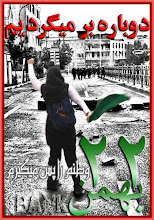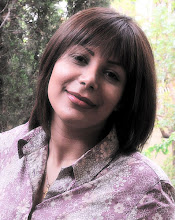Many Iranian Diplomats Seek Political Asylum
Probably the shortest post I've ever written, but do click on the link and read the article - it's short, succinct and revealing. I was prompted to follow it up myself after news emerged that the Iranian diplomatic representative in Norway resigned his post and petitioned for asylum there.
The Persian 2 English site is an excellent way of getting additional information about the situation in Iran in English.
Friday, 15 January 2010
Tuesday, 12 January 2010
Comparatively Speaking: Reviewing The Reviews
Introduction
There’s something insanely decadent about eating eggs on toast and drinking really classy champagne for supper – I guess breakfast would be more decadent but then I’d just fall over on the ice. Anyway, perhaps this just tells you what a simple soul I really am underneath all the artspeak.
So, it’s January and my sciatic nerve’s still complaining but with nothing like the ferocity of previous months. I write / type standing up – sitting down is still an endurance test – but if it was good enough for Virginia Woolf, it’s good enough for me.
So, The White Rabbit’s got very interested in artists who work in clay and show in swanky or moderately swanky art galleries – which is fine by me because it means I get a troll around London finding out about all this stuff, at least 50% of which I probably wouldn’t get to otherwise and I find that I’m still fascinated by what’s going on, or not going on, in these old West End joints.
So they are still representing, ‘nice painting.’ Nowt wrong with that, you may say, but no point pretending it’s groundbreaking, exciting work with something new or different or especially incisive to say about the world. If Goodman’s work is representative of what they show, then it’s safe to say that they stock, well, ‘safe’ work: sellable, domestic, well-made, - the precise, painting equivalent of Alison Bitton. Sound - Camberwell Grey - 2nd eleven - inoffensive; a nice, moderately flattering mirror in which the bourgeoisie can view themselves. Well, why not? If there’s a market – flog it. Silence, you in the back row, no one mentioned dead horses!
Love Jonsson, ‘Conquered Time,’ 2009, in Skill, (Think Tank 05, 2009): 34.
There’s something insanely decadent about eating eggs on toast and drinking really classy champagne for supper – I guess breakfast would be more decadent but then I’d just fall over on the ice. Anyway, perhaps this just tells you what a simple soul I really am underneath all the artspeak.
So, it’s January and my sciatic nerve’s still complaining but with nothing like the ferocity of previous months. I write / type standing up – sitting down is still an endurance test – but if it was good enough for Virginia Woolf, it’s good enough for me.
East End / West End
I was asked to write a review of Charlotte Hodes work at Marlborogh Fine Art. First the White Rabbit asks me to write about those four artists – Rebecca Warren, (Maureen Paley), Rachel Kneebone, (White Cube), Renee So, (Kate MacGarry), and Klara Kristalova, (Alison Jacques) – who feature this month’s Ceramic Review; then he asks me to review Hodes’ work, at a gallery in Cork St; now I’m to write about Judy Fox, another artist working in clay who is represented by PPOW gallery in New York – doesn’t look especially blue chip but seems to be a fairly standard fine art gallery – also represents the highly esteemed, (by The C Word anyway), Carolee Schneemann, who hales from the 1970s feminist art movement and did some extraordinary performances cleaning floors with her hair among many others. So, The White Rabbit’s got very interested in artists who work in clay and show in swanky or moderately swanky art galleries – which is fine by me because it means I get a troll around London finding out about all this stuff, at least 50% of which I probably wouldn’t get to otherwise and I find that I’m still fascinated by what’s going on, or not going on, in these old West End joints.
The Great Divide
They appear to have frozen in time. I get the impression that the brash, oh so nouveau riche, (perish the thought), YBA, Saatchi / J. Jopling cohort burst into action in, say, 1989, eclipsing Cork street and it’s cohorts forever. They, Cork Street, responded by carrying on just as they always had. They still are. Some are, shall we say, renewing the stock; in other words they’re adding to their collection of artists. Marlborough certainly seems to have a number of dead artists on its lists. It represents highly established and still living artists like Paula Rego, Magdalena Abakanowicz, Frank Auerbach and Maggie Hambling as well as ‘the estate of RB Kitaj,’ Uglow, Pasmore et al. In addition they have an artist by name of Catherine Goodman, with whom I was a student at Camberwell. Imagine my surprise to find that she was still producing EXACTLY the same work she did at Camberwell on the painting degree course 25 years ago. So they are still representing, ‘nice painting.’ Nowt wrong with that, you may say, but no point pretending it’s groundbreaking, exciting work with something new or different or especially incisive to say about the world. If Goodman’s work is representative of what they show, then it’s safe to say that they stock, well, ‘safe’ work: sellable, domestic, well-made, - the precise, painting equivalent of Alison Bitton. Sound - Camberwell Grey - 2nd eleven - inoffensive; a nice, moderately flattering mirror in which the bourgeoisie can view themselves. Well, why not? If there’s a market – flog it. Silence, you in the back row, no one mentioned dead horses!
Charlotte Hodes
So where does Hodes fit in? And how? Well she’s more up to date, I’ll give her that. Faultlessly crafted. No problem there either. Intellectually rigorous –can’t ague with the stuff, it’s absolutely rock solid. Thank goodness you don’t have to like it – but whatever you do, don’t go and see this stuff with a hangover. Or if you must, take a bucket or a lot of alka seltzer, because it IS nauseating. The morning-after-the-night-before colours really don’t help – it’s even got lumps floating about it. Grotesque. And, I’m sorry, but it really is vastly over-crafted. I could find no justification for it. It was, in Love Jonssen’s words, ‘a manifestation of wasted time.’ A harsh judgement, perhaps, but there seemed to be no discernible story, or not one that I really cared about- the faint-hearted feminist narrative is one we’ve seen a thousand times before – and is insipid at best anyway and beyond that – what? There’s no particular beauty either. It’s just ever so well crafted. I did try to convince myself it was some kind of spoof on Donatella Versace and might look well alongside some kind of high fashion home-ware collection, but I didn’t succeed. Psiche Hughes
This is all in immensely sharp contrast to Psiche Hughes work that I bloggged about some time ago. Hughes shows at Francis Kyle gallery down the road, same neighbourhood. No claims can be made here about virtuoso exercises in ceramic materials. It isn’t ‘well crafted,’ but it is exactly as well crafted as it needs to be to say what she wants to say, and it’s not without skill – she certainly understands the difference between colour, local colour and tone – these are old fashioned craft-painting concerns – you see? I’m a wee bit conservative myself as well as being a simple soul. Hughes’ work is not made up of ‘museum pieces,’ forget that, but it is well observed and funny. If I had to choose, yes, I’d take Hughes imitation still-life, ‘bananas in a bowl,’ home with me long before I gave house room to one of Hodes confections. East End
And what of the others, the four who graced the blue-chip East End galleries? I’d love one of Rebecca Warren’s terrifying women in my front room, by the window – that’d give upstairs something to think about. Kistalova’s work I just love, I’d take it with me anywhere and everywhere. The other two I can leave alone. So’s work I found just slightly too pedestrian – predictable somehow and Kneebone’s was just vastly over heated – almost too desperate – ‘look, I am a proper artist, I know all about the Renaissance and Roccocco and I wouldn’t dream of working in anything other than porcelain.’ It protests it authenticity too much – but it’s very early days in her case, she may yet become much more fluent and less self-conscious. Conclusion
What was interesting to me about this little crop of artists who showed in 2009, is that it seems that the concerns and, in particular, the problems of artists working in clay seem to be broadly similar to those of potters working with clay –not when they make pots so much, but when they depart form making pots and start to produce work which suggests they might become part of the wider art world. They have exactly the same struggles with authenticity – but this time it’s ‘art’ authenticity that’s at stake; predictable ways of thinking about something, resulting in a too predictable narrative; and an over-concern with being authentically ceramic and designed, in the case of Hodes. The three who, I felt, had very much found their own voices, namely Kristalova, Warren and, although far less developed, Hughes, were able to identify a way they needed to work with the clay and, in turn, make it work for them. Certainly Kristalova and Warren are absolutely fluent in the ceramic dialect of their choice and it serves them fully, whereas Kneebone, Hodes and So are still, to some extent dominated by it. Kneebone, in particular, is too close to the grammar book and dictionary, but give her another five years, and I hope we’ll see something much more expressive – unless, of course, she becomes increasingly pedantic. Hughes is working with clay in her retirement, so is an entirely different matter. Still, I can’t help feeling that her very extensive understanding of language and of the particular demands of the art of translation give her a very astute and fully understood aesthetic sensibility. Love Jonsson, ‘Conquered Time,’ 2009, in Skill, (Think Tank 05, 2009): 34.
Subscribe to:
Comments (Atom)











































